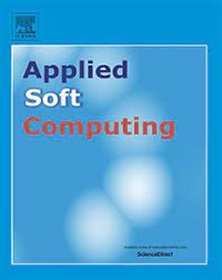A semi-supervised multi-source remote sensing image classification network based on adaptive pseudo-label generation
IF 7.2
1区 计算机科学
Q1 COMPUTER SCIENCE, ARTIFICIAL INTELLIGENCE
引用次数: 0
Abstract
Earth observation technology leveraging remote sensing (RS) imagery serves as a valuable non-contact detection method with broad applications in classification research. Hyperspectral (HS) image classification, while effective in various domains, faces challenges due to the unique characteristics of HS data. Fusion diverse RS data sources can mitigate redundancy and enhance classification efficiency. However, many deep learning approaches for multi-source RS classification rely heavily on abundant labeled data, which can be time-consuming and often impractical. To address the limitations in feature extraction and classification accuracy stemming from the scarcity of labeled multi-source RS image samples in complex scenes, we propose a novel semi-supervised multi-source RS image classification network based on adaptive pseudo-label generation (S2CNet-APG). This framework incorporates attention modules that effectively embed active RS features into HS features, enhancing performance through squeezing and excitation (SE) driven attention mechanisms. Our semi-supervised learning approach employs adaptive thresholds to manage the quantity of pseudo-labels derived from unlabeled samples, while maintaining the spatial consistency of the information to ensure quality. This dual strategy effectively balances the quantity and quality of pseudo-labels, enabling accurate classification with limited labeled samples and transitioning multi-source RS image classification from a supervised to a semi-supervised paradigm. We conducted extensive experiments on three real-world multi-source RS datasets, achieving superior results that validate the efficacy of the proposed method.
基于自适应伪标签生成的半监督多源遥感图像分类网络
利用遥感影像的对地观测技术是一种有价值的非接触探测方法,在分类研究中有着广泛的应用。高光谱(HS)图像分类虽然在各个领域都是有效的,但由于高光谱数据的独特特性,它面临着挑战。融合多种遥感数据源可以减少冗余,提高分类效率。然而,许多用于多源RS分类的深度学习方法严重依赖于大量的标记数据,这既耗时又不切实际。为解决复杂场景下多源遥感图像样本标记稀缺对特征提取和分类精度的限制,提出了一种基于自适应伪标签生成的半监督多源遥感图像分类网络(S2CNet-APG)。该框架结合了注意模块,有效地将主动RS特征嵌入到HS特征中,通过挤压和激励(SE)驱动的注意机制提高了性能。我们的半监督学习方法采用自适应阈值来管理来自未标记样本的伪标签数量,同时保持信息的空间一致性以确保质量。这种双重策略有效地平衡了伪标签的数量和质量,使有限的标记样本能够准确分类,并将多源RS图像分类从监督范式过渡到半监督范式。我们在三个真实的多源RS数据集上进行了大量的实验,取得了优异的结果,验证了所提出方法的有效性。
本文章由计算机程序翻译,如有差异,请以英文原文为准。
求助全文
约1分钟内获得全文
求助全文
来源期刊

Applied Soft Computing
工程技术-计算机:跨学科应用
CiteScore
15.80
自引率
6.90%
发文量
874
审稿时长
10.9 months
期刊介绍:
Applied Soft Computing is an international journal promoting an integrated view of soft computing to solve real life problems.The focus is to publish the highest quality research in application and convergence of the areas of Fuzzy Logic, Neural Networks, Evolutionary Computing, Rough Sets and other similar techniques to address real world complexities.
Applied Soft Computing is a rolling publication: articles are published as soon as the editor-in-chief has accepted them. Therefore, the web site will continuously be updated with new articles and the publication time will be short.
 求助内容:
求助内容: 应助结果提醒方式:
应助结果提醒方式:


